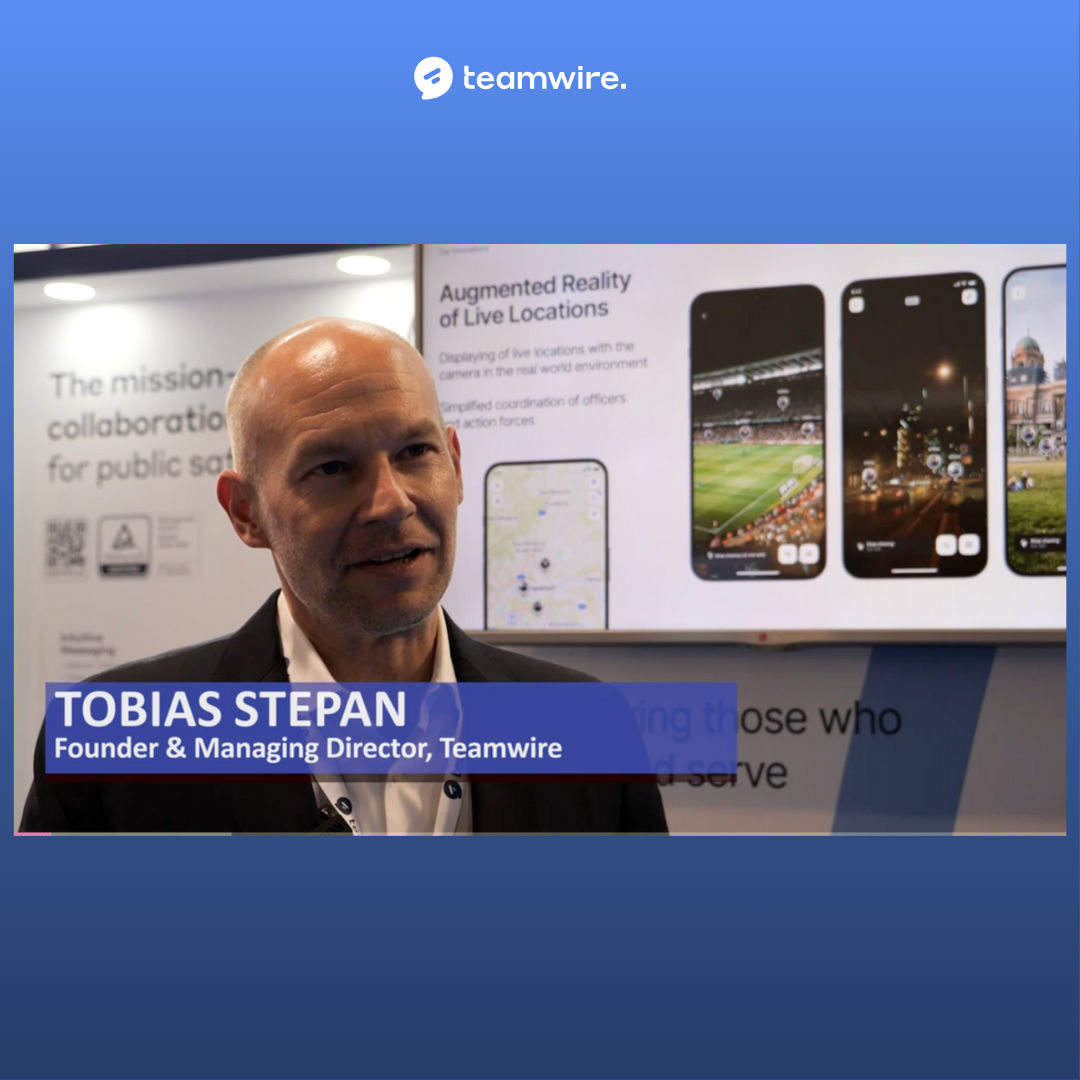What are the most significant security risks with WhatsApp & Co.
1. Metadata as a source of danger
Metadata – i.e., data about data – often reveals more than many users realize. This includes information such as
- Who communicates with whom?
- When and how often does the communication take place?
- How long are the messages?
- Which group memberships exist?
Metadata can also reveal locations and other things. For example, when IP addresses are tracked or push notifications are analyzed, even online status or read confirmations are metadata that allows sensitive conclusions about working methods, availability, and internal processes.
US IT security expert Bruce Schneier puts it like this:
“Collecting metadata on people means putting them under surveillance.”
This is fatal for authorities and organizations with critical communication needs.
Let’s take two everyday scenarios as an example:
- A man chats with another woman more than with his actual wife. This could indicate an affair …
- A man regularly talks to a urologist during the day. He probably has a medical problem.
Similar examples can also be derived for critical infrastructures, authorities, etc.:
- Police:
An officer in a special unit regularly communicates with the same colleagues in a chat at night. This would allow conclusions to be drawn about deployment patterns, on-call times, and shift changes from the times, frequencies, and group affiliations. It could potentially be valuable for attackers or criminals to be aware of planned access or covert operations.
- Municipal utilities and energy suppliers:
An employee in the IT department of an energy supplier regularly chats with an external service provider, always shortly before maintenance work is carried out on a substation. Attackers could recognize when certain systems are vulnerable, e.g., in order to plan attacks or acts of sabotage, simply by looking at the communication pattern recorded in the metadata.
- Healthcare:
A doctor in oncology chats remarkably frequently with a particular specialist laboratory. The frequency of communication can allow conclusions to be drawn about serious diagnoses and internal processes, which could affect data protection and trust.
- Authorities:
A Ministry of the Interior department communicates rapidly with a crisis team and external communication consultants. The intensity and timing of the messages could lead observers to assume that a political crisis or an imminent security situation (e.g., terror warning, demonstration, cyber attack) is imminent, even before official information is made public.
Such information can be worth its weight in gold for attackers, who can use it to identify vulnerabilities, spy on internal structures, or launch targeted disinformation campaigns. WhatsApp and similar services, which are often part of big data companies such as Meta (Facebook), have an inherent interest in collecting and analyzing such metadata, for advertising purposes or to improve their services.
The assurance that E2EE encrypts content often distracts from this far-reaching data collection.
2. Shadow IT
Another closely related problem is the emergence of shadow IT. Employees often resort to private devices and consumer messengers if official communication channels are perceived as too cumbersome or user-unfriendly.
This use is beyond the control and administration of IT managers. There is no centralized management of users and rights, no way to control data outflow, and no way to enforce compliance requirements.
Sensitive official information thus ends up uncontrolled on private end devices and third-party servers, often outside the EU, without any guarantee of data protection and security in accordance with the GDPR.
The “SignalGate” scandal in the USA, in which high-ranking government representatives exchanged sensitive information via a consumer messenger that was inadvertently also accessible to a journalist, is a drastic example of the dangers of uncontrolled shadow IT.
This is an unacceptable risk for organizations bound to secrecy or that must meet strict compliance requirements.
Shadow IT is also encouraged when employees leave companies or organizations, or an end device is lost or stolen. This is precisely when you need to be able to block the user or device centrally immediately to prevent the uncontrolled use of sensitive data.
By the way, you may also be interested in the article “Why WhatsApp, Signal & Co. are not an option for secure communication between authorities”.
3. Hidden functions and backdoors
Backdoors are hidden access options to systems. They bypass standard protection mechanisms and are often used to gain unauthorized access to a computer, a program, or a network.
Here are some – still utopian – scenarios, which would, however, be technically possible:
Scenario 1
Let’s assume you can add a third person to WhatsApp chats without displaying him or her in the chat group.
This is reminiscent of the SignalGate case in the USA. Except that in such a scenario, third parties can read along without the other users noticing.
Scenario 2
Let’s assume that the provider forwards the preview from the push notifications and uses it to analyze the user’s location to read messages and track the user’s location.
Scenario 3
Let’s assume the provider always forwards the last five messages of each chat to a surveillance server to monitor a user. Or let’s assume that the provider forwards the user’s private keys to decrypt the app to decrypt messages.
Three unpleasant use cases that are technically possible. If providers pursue particular objectives or have legal obligations, such scenarios can quickly become a reality.
4. Legal hurdles and risks due to US laws
In addition to technical aspects such as metadata and shadow IT, the legal framework represents a massive hurdle for consumer messengers from the USA or other third countries. (Read also: Remain Capable of Action: Why Alternatives to Us Cloud Solutions Are Essential)
The GDPR, as a European guideline, is no friend of US laws
The EU’s General Data Protection Regulation (GDPR) sets strict standards for the processing of personal data. These apply to all organizations that process the data of EU citizens, regardless of their location.
Core principles such as purpose limitation, data minimization, transparency, and accountability often conflict with US providers’ business models and legal obligations.
The US CLOUD Act – a key problem for European data protection
In a nutshell:
The US CLOUD Act (Clarifying Lawful Overseas Use of Data Act) obliges US companies to grant US authorities access to stored data – even if this data is stored on servers outside the USA, for example, in the EU.
This fundamentally undermines the data sovereignty principle and the protection mechanisms of the GDPR.
The assurance that data is “hosted in Europe” loses considerable value if the provider is nevertheless subject to US law and can be forced to hand it over.
Attempts to make transatlantic data transfers legally secure have failed several times so far:
The “Privacy Shield” agreement, which, as the successor to “Safe Harbor”, was intended to guarantee an appropriate data protection standard for data transfers to the USA, was declared invalid by the European Court of Justice (ECJ) in 2020 in the so-called “Schrems II” ruling.
In particular, the ECJ criticized the US security authorities’ far-reaching surveillance powers and the lack of legal protection for EU citizens.
The latest developments surrounding the Privacy and Civil Liberties Oversight Board (PCLOB) in the USA, whose ability to act has been weakened by political decisions, are also increasing uncertainty. The PCLOB was supposed to be an independent supervisory authority for US surveillance practices. Its weakening represents a further setback for protecting European data from US services.
For public authorities, critical infrastructure operators, healthcare organizations, and other security-critical institutions, this means a significant compliance risk:
The use of WhatsApp & Co. can result in severe fines under the GDPR and the loss of control over sensitive, critical, or even secret information.
The temptation of the ease of use of typical consumer messengers should not obscure these profound legal and security implications.
Choosing a European provider that is fully compliant with the GDPR and guarantees genuine data sovereignty is not just an option but a necessity.





